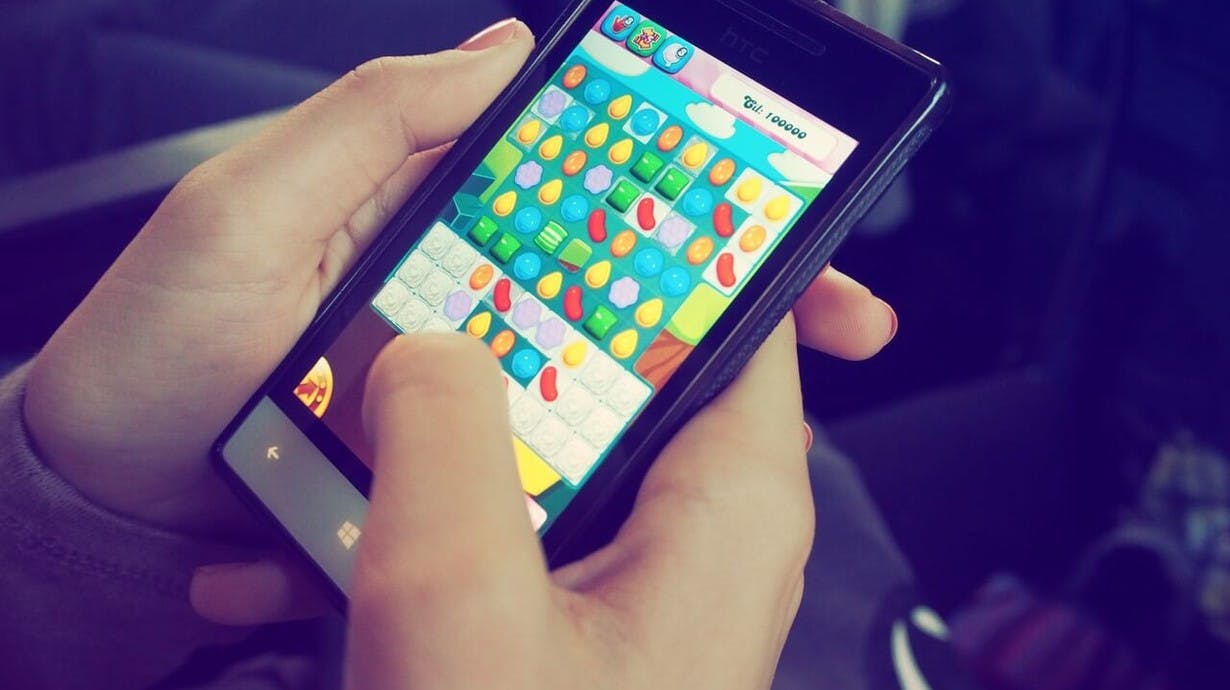Simplify user acquisition for mobile games
Learn how mParticle helps mobile gaming apps run highly targeted user acquisition campaigns across multiple services to acquire high-value users and simplify user acquisiton for mobile games.

The market for mobile app games is booming; mobile gaming apps account for 75% of the revenue generated from the iOS app store and this trend shows little sign of slowing. As profitable as mobile gaming has become, it’s also become incredibly competitive with an estimated 800,000 mobile app games currently offered on the iOS app marketplace alone.
For growth marketers to succeed in tapping into the market, they need to factor in industry challenges like user retention and acquisition costs as well as technical challenges.
Mobile gaming apps require a robust, complex technical stack to perform properly, but this often leads to growth teams wading through fragmented data spread across different platforms and channels. Hence, running a targeted campaign requires pulling an engineer away from developing new core features to create a list of users to target. This both takes away from product evolution and will likely push your timeline for running an acquisition or retention campaign out by weeks or even months.
Using a mobile data platform like mParticle can help reduce acquisition costs and speed up campaign execution by enabling gaming apps to coordinate campaigns across different media platforms. By unifying data collection under one hood, marketers can quickly group users into unique audience segments using parameters such as installs, LTV, and purchases, then instantly connect them to multiple paid media platforms, like Fiksu, IronSource, Facebook, and Tapjoy, to target users.
Here’s a practical example of how mParticle’s gaming customers use the platform to quickly build audiences and execute campaigns across multiple services to acquire high-value users.
AudienceSync basics
Build an audience
Building a custom audience allows marketers to slice and dice through customer populations based on highly-specific characteristics. In grouping these customers together, marketers can gain a much deeper understanding of the kinds of content that will resonate with customers. Creating customer audience segments in mParticle is as simple as entering the audience name, selecting the platform(s) you would like to include (for this example we’ll use iOS and Android users), and then specifying criteria to build that audience. For example, you can create an audience of lapsed users that have not been active on the app within the last 30 days. Once you activate the audience, mParticle will start to populate the audience with users that meet your criteria and will automatically update as users qualify into or out of that audience.
Connect to multiple platforms
Once you have created an audience, you can make this data actionable by sending it to 175+ platforms. You can connect the same list to one, two, or all services with just a few clicks. This dramatically improves efficiency for marketers targeting the same group of users across multiple vendors, in that they’re able to build a single audience once, and then connect that audience to multiple desired downstream media platforms.
Useful audience types
You can segment your audience by innumerable permutations, depending on what you want to find out about your customer base and how you want to employ this information. Below are a few examples of some audience segments you may want to try to get the most out of your growth marketing.
Installs and crashes
Creating an audience segment for customers that have recently installed your application, ideally in real time, makes further brand engagement easy. One of the most popular ways install audiences are used is for initial bonuses. For example, a customer that installs Candy Crush might receive a special offer to claim 50 coins for gameplay, which allows them to try out special features that you have to pay for using game currency. Ideally, these special features are attractive enough that once the customer is out of free money, they decide to spend real money to purchase game currency.
Customers expect for mobile games to work. When a mobile game crashes, customers can become frustrated and become less likely to continue using the app to interact with that brand. Creating an audience comprised of customers that have had a negative experience, like an app crash, can help brands turn it into a net positive experience and retain that customer. A simple application of a crash audience is to send them an email with a Zendesk link to alert your team of potential issues. That way the customer not only feels supported, they also feel that the brand is willing to take action to prevent them from having that same negative experience again
Lookalike audience
The best basis for discovering new users is knowing your existing customer base inside and out. Media platforms like Facebook, Snapchat, and Pinterest make it easy to find users similar to your best customers that are more likely to convert. With mParticle, you can connect your existing first-party data to these services to perform lookalike modeling. Simply create an audience based on your most valuable users (example: your highest LTV users) and then send downstream to build lookalikes.
Suppression audience
To ensure you don’t waste money targeting your current customers who have already converted, use mParticle to create a suppression list. Simply select the criteria of users who you do not wish to target, and send those users downstream to your targeting vendors for suppression campaigns. In addition to improving the efficiency of ad spend, you’re creating an improved user experience by guaranteeing that current customers won’t be targeted for acquisition campaigns.
Cross-app promotion
When you have reached the right audience for your game, you want to not only keep them, but upsell them. In all likelihood, engaged users that enjoy your game and play for a certain number of total hours or hours per day may enjoy another of the games developed by your company. Many mobile games have advertising space, where you can easily add an ad for other games in your portfolio or you can use push notifications with an incentive, like extra lives or coins or health, to download the second game. The idea is to get your foot in the door with cross-app promotion, once users download the second game, you can move them into one of the other audience types to market towards them more successfully.
Special event shoppers
Black Friday and Cyber Monday are two of the busiest shopping days in the United States, representing a prime opportunity for smart mobile game marketers. Customers are now primed to purchase on these days, thinking they will be able to get a better deal than at any other time.
Enter the event-motivated audience. Mobile game marketers can create an audience of customers that have purchased in-app currency, boosts, or items and send them an enticing promotion on these same items they may have been considering repurchasing. By creating this type of audience, mobile game marketers can tap into the excitement and desire to score a great deal. This isn't limited to Black Friday or Cyber Monday, the special event can be anything from a company anniversary or reaching a milestone. It's up to you to get creative.
Optimize in real time
Audiences built with AudienceSync automatically update lists, so you know that your lists are always up to date and ready for use. Once a user’s status changes, they can be automatically removed from, or added to, an audience list. mParticle achieves this by processing all of your app and other integrated data in real time to continuously qualify users in and out of audience segments based on their behavior. For example, if you build an audience of cart abandoners, a user will be removed from that audience across Facebook, Twitter, Pinterest, and Tapjoy as soon as they revisit their cart and complete their purchase. This creates a seamless user experience and eliminates the possibility of paying for wasted impressions or seeing duplicate conversions.
It really is just this easy for mobile gaming apps to create highly targeted user acquisition campaigns across multiple services. If you’re interested in learning how mParticle can help you acquire more high-value users, check out our solutions for gaming!
Latest from mParticle
Try out mParticle
See how leading multi-channel consumer brands solve E2E customer data challenges with a real-time customer data platform.
Startups can now receive up to one year of complimentary access to mParticle. Receive access




